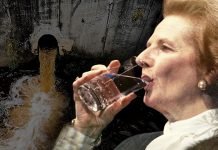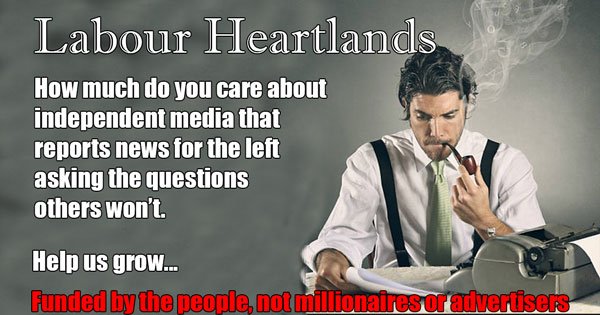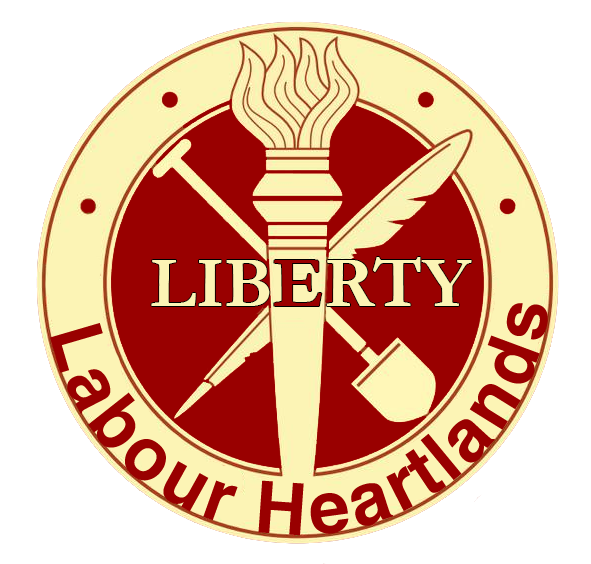Good social housing should be a life choice, not a fallback.
The promise of good social housing by the government fails constantly. There is no excuse other than feeding the banks and making debt slaves out of all of us.
It’s good quality social housing that’s needed and governments should stop trying to fill the pockets of the banks by pushing people into so-called affordable housing. There’s no excuse.
The Clement Attlee government embarked on a massive public housing campaign in the aftermath of World War II. The government pledged to build 500,000 houses a year, targeting areas that had been heavily damaged by bombing during the war. By the time the Attlee government left office in 1951, it had built over 1.1 million new homes, providing affordable and decent housing for families across the country.
These initiatives were part of a wider social and economic agenda known as the “welfare state,” which aimed to improve the lives of ordinary citizens and reduce social inequalities. Attlee’s government’s housing policy was a significant achievement and played a vital role in the country’s post-war recovery.
This is how we level up this is how we kick start a falling economy.
With its innovative ideas, especially in the field of social housing, the city of Vienna has long been a pioneer in the global pursuit of new strategies for the design and implementation of forward-thinking urban developments and ways of living.
Building on urbanistic and social aspects, Vienna has not only constructed new projects with distinctive qualities throughout the city but also founded and revitalised entire quarters. With their historical roots in “Red Vienna,” these concepts signal dynamic opportunities to enhance the quality of life in a contemporary metropolis by creating model living environments.
Vienna’s social housing policy originated from a reform program that started in the 1920s. In order to overcome the deplorable housing conditions inherited from the Hapsburg Empire, a socialist government built more than 65,000 low-cost apartments in large housing estates.
With its innovative ideas, especially in the field of social housing, the city of Vienna has long been a pioneer in the global pursuit of new strategies for the design and implementation of forward-thinking urban developments and ways of living.
Building on urbanistic and social aspects, Vienna has not only constructed new projects with distinctive qualities throughout the city but also founded and revitalised entire quarters. With their historical roots in “Red Vienna,” these concepts signal dynamic opportunities to enhance the quality of life in a contemporary metropolis by creating model living environments.
Vienna’s social housing policy originated from a reform program started in the 1920s. In order to overcome the deplorable housing conditions inherited from the Hapsburg Empire, a socialist government built more than 65,000 low-cost apartments in large housing estates.
This program known as “Red Vienna” included a generous social infrastructure, and well-known architects designed many of the estates. Many municipal housing estates are now listed landmarks, including the Karl-Marx-Hof and George-Washington-Hof. After a civil war and a fascist coup d’etat in 1934, the social housing program came to an abrupt end, and when Austria was annexed to Nazi Germany in 1938, thousands of Jewish tenants and political opponents had their apartments confiscated.
In 1945, as a result of the war, which destroyed 20 percent of the total housing stock, Vienna—like Berlin—was divided into four sectors. The city immediately restarted its social housing program. Although these postwar estates seldom achieved the high architectural quality of the 1920s, the number of built projects was nonetheless impressive, with up to 10,000 municipal rental units built annually.
However, the critique of these often monotonous prefab blocks led to greater architectural diversity in the 1970s, with experimental buildings and theme-oriented estates like the terraced towers of Alt-Erlaa, which addressed new societal challenges.
One of the most innovative characteristics of this new model of architecture is the densification of the urban environment without losing the life quality. In the 70s Austrian architect, Harry Glück came up with a similar idea of “Stacked Family House”, assembling the “single villas” one upon another in the form of terraces. To supplement this concept, there are plant troughs of almost 4 m² which also serve as privacy screens and small gardens. The stacked terraced gardens climb up to the 13th floor in altitude.
Wohnpark Alterlaa is a residential park in the city of Vienna, it was designed by Harry Glück and was built between 1968 and 1985. The residential park is composed of 3.200 apartments in three skyscrapers with all the infrastructure necessary for a neighbourhood of this size. The plant is also considered as a project of the functional satellite city of the 1970s.
The terrace towers in Wohnpark Alterlaa are still highly valued and praised by their residents in terms of quality of life, safety, and diversity of use. Harry Glück’s philosophy is: “building for the working classes with the quality that rich people are fond of: close to nature and water”, for this reason, nearly all his apartments have broad balconies with troughs for gardening and a swimming pool on the roof.
Climate and Environmental Protection
The City of Vienna employs building codes and housing subsidies to influence both the buildings themselves and their construction process. In addition, they affect the process of planning and building itself.
As a result of compulsory requirements laid down in the competition process for the projects, most have much better thermal qualities than are mandated in the building code, meeting the requirements of the Kyoto Protocol. Additional ecological measures include rainwater and gray-water recycling as well as solar and wind energy. Many new “passive houses” no longer require traditional heating at all.
Diversity and Integration
Like many large cities, Vienna is experiencing profound demographic changes—resulting ironically, in a higher proportion of both young people and more senior residents at the same time—whose manifestations include immigration-driven growth, an ageing population, and new lifestyles.
Today more than a third of the city’s population is foreign-born. As a consequence, one of the declared objectives for housing construction in Vienna is the targeted integration of “different” and new lifestyles in subsidised housing projects.
These changes require new forms of multi-generational housing and provision of social services in the immediate vicinity. In addition, new residential construction must accommodate the needs of people with special needs and actively pursue new ways of dealing with social disadvantage, “new” poverty, and homelessness.
The policy of the City of Vienna is to prevent the exclusion or stigmatisation of any segment of the population and to promote integration instead. To provide for these rapid changes, the city supports architecturally flexible projects.
The promise of good quality social housing by the government fails constantly.
There is no excuse other than feeding the banks and making debt slaves out of all of us.
Tony Benn Housing and debt: “Thatcher was a much cleverer woman than we give her credit for. What she said was: ‘you can buy your council house, so you’ll be a property owner, you may not be able to get a wage increase, but you can borrow’. And the borrowing was deliberately encouraged because people in debt are slaves to their employers.”
“The need for social housing is crucial and should not be replaced by mortgages that lead to debt slavery. Instead of focusing solely on affordable housing, we need high-quality social housing where individuals have the option to choose whether or not they want a mortgage. Homeownership should not be presented as the only solution to the housing crisis; it should be seen as a lifestyle choice.”
The Vienna Model could be the foundation of a social housing blueprint, social housing should be a life choice, not a fallback.
Help Us Sustain Ad-Free Journalism
Sorry, I Need To Put Out the Begging Bowl
Independent Journalism Needs You
Our unwavering dedication is to provide you with unbiased news, diverse perspectives, and insightful opinions. We're on a mission to ensure that those in positions of power are held accountable for their actions, but we can't do it alone. Labour Heartlands is primarily funded by me, Paul Knaggs, and by the generous contributions of readers like you. Your donations keep us going and help us uphold the principles of independent journalism. Join us in our quest for truth, transparency, and accountability – donate today and be a part of our mission!
Like everyone else, we're facing challenges, and we need your help to stay online and continue providing crucial journalism. Every contribution, no matter how small, goes a long way in helping us thrive. By becoming one of our donors, you become a vital part of our mission to uncover the truth and uphold the values of democracy.
While we maintain our independence from political affiliations, we stand united against corruption, injustice, and the erosion of free speech, truth, and democracy. We believe in the power of accurate information in a democracy, and we consider facts non-negotiable.
Your support, no matter the amount, can make a significant impact. Together, we can make a difference and continue our journey toward a more informed and just society.
Thank you for supporting Labour Heartlands












